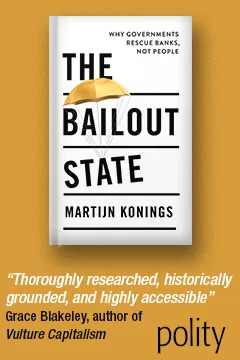A Man’s Economy
A Man’s Economy
The parts of the Biden agenda most targeted at addressing women’s economic vulnerabilities were never passed.

Election night in Ann Arbor, Michigan, where I live, was unseasonably warm, so I “slept” with my windows open. As a result, I came to understand what was happening to the country when I started to hear a fraternity set off fireworks every time another state was called for Donald Trump. During the slow march to 5:30 a.m., when Trump clinched his victory, my lefty bubble was periodically punctured by the sound of shots in the air.
A lot of ink has been spilled about Trump’s ability to win over men, especially young men; like fireworks, his brand of misogyny is impossible to ignore. Fewer post-election takes have focused on why Kamala Harris’s message failed to turn out enough women to compensate for this gender gap (which, at 10 percent, was in fact relatively steady across the last three presidential elections). Here is one hypothesis: the economic record and message Harris carried forward as Joe Biden’s vice president was itself deeply gendered.
Biden is leaving Trump with an economy that the Economist has declared “the envy of the world.” Under this administration, unemployment remained below 4 percent for twenty-seven consecutive months. As Zachary D. Carter reminded us, “across the 50 years preceding Biden’s tenure in office, the U.S. economy enjoyed only 25 total months with an unemployment rate below 4 percent.” Running the economy at full employment was a policy choice, and it strengthened workers’ bargaining power and raised wages. This decision has benefited both men and women in the workforce. Women’s employment-to-population ratio has reached new heights under Biden. Nevertheless, the earnings gap between men and women has remained stubbornly fixed.
The gender wage gap is driven by a number of factors, but very high on the list is inadequate care infrastructure. Because women earn less on average than men, women with male partners are more likely to step out or back from the workforce to care for children and other family members when there are no other options. Women are also more likely to work in the care sector, where wages are extremely low. Despite efforts to address the failures of the care sector for workers and consumers alike, the care elements of Biden’s Build Back Better agenda were compromised out of the final Inflation Reduction Act (IRA). In other words, the parts of the Biden agenda most targeted at addressing women’s economic vulnerabilities never passed.
At the same time, the signature legislative achievements of Biden’s term in office—the IRA, the CHIPS Act, and the Infrastructure Investment and Jobs Act—were directed at industries dominated by men: construction and heavy manufacturing. Women make up just 11 percent of the construction industry workforce and 27 percent of the auto industry workforce (only two points lower than women’s share of jobs in the manufacturing industry as a whole). Under Biden, important new investment has flowed into these industries. Over 700,000 new jobs have been created in the manufacturing sector and over $900 billion has been committed to new investments in manufacturing. The Biden administration worked to ensure that employers receiving these investments employ women: for instance, companies receiving significant government support are required to ensure child-care availability for their workforce. Nevertheless, the symbolism—and in some cases the reality—of the successes and failures of this administration’s legislative agenda suggested it was building a man’s economy.
Meanwhile, the most stubborn challenge of the Biden economy, inflation, has a particularly gendered salience. Although inflation is certainly felt by everyone, for the vast majority of families women serve as the primary grocery shoppers. It is women who are faced with the price of eggs weekly and must figure out what to do about it. Among economic commentators, it has become a trope that people believe their fates in the job market are within their control while prices are something that happens to them. That may be the case, but women feel they are responsible for making those prices work for their families. That has been an enormous challenge.
This phenomenon showed up in polling. Women consistently see the economy more negatively than men; this was true prior to and throughout the Biden administration. That said, after a brief moment when men’s and women’s consumer sentiment converged in 2022, men’s enthusiasm about the economy recovered much more quickly than women’s. Indeed, by May 2024, when surveys reported that people were beginning to feel better about their finances, a look beneath the hood showed that this improvement came from men. Women, in fact, felt worse than they had the year before. Pollsters attribute this at least in part to the fact that women are more likely to use cost-of-living to measure the state of the economy than men.
Of course, Harris offered plans for addressing prices—especially on the largest costs in family budgets, like care and housing—that would have worked far better than any of Trump’s misguided proposals. Yet she did so while standing not only next to billionaires, but also, and perhaps more importantly, in front of a record that made this message difficult to land for women—a rotten hand to be dealt if you need to drive up turnout among women voters.
This matters not just retrospectively. Biden’s economic agenda was an initial attempt to break with forty years of neoliberal economic orthodoxy and offer a more worker-focused program. But its most significant breaks with the market-based policymaking of recent decades were rooted in a vision for the country that harkened back to a deeply gendered, manufacturing-heavy past. At the same time, this agenda delivered insufficient solutions for how to improve women’s lives in the twenty-first-century economy. Encouraging women to enter manufacturing is not a satisfying answer when the costs that define their lives remain stubbornly high; nor, it turns out, is pointing out that the Republicans are intent on taking away bodily autonomy.
As progressives try to build a left-wing populism, we must ensure that women’s economic concerns are at the forefront. We must actively reject an economics that reinforces “traditional” gender roles (that’s for the right-wing populists). This means not just pointing out how out of touch those right-wing views are; it means offering a new vision to address the economic challenges that define women’s lives. For example, we need to move beyond market-based solutions for the cost of care—as Harris’s Medicare at Home plan began to do (albeit late in the game). Pollsters have pointed out that the election results show “non-college women as the new swing voters.” Figuring out what a left-wing, feminist populism looks like is our challenge going forward.
Suzanne Kahn is senior vice president of the Roosevelt Institute’s think tank. She holds a PhD in American history from Columbia University and is the author of Divorce, American Style: Fighting for Women’s Economic Citizenship in the Neoliberal Era.






